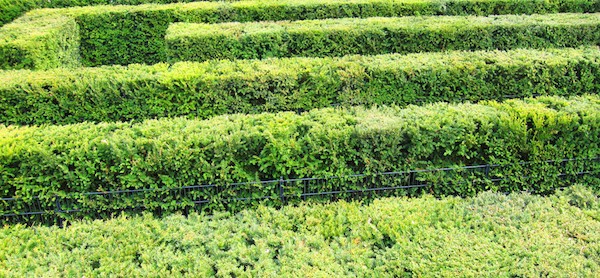Last updated on October 23rd, 2023 at 08:34 pm

The best time for hedge trimming largely depends on the type of hedge you have and your goals for trimming. Here are some general guidelines for the timing of hedge trimming:
1. Deciduous Hedges (Hedges that lose their leaves in winter):
- Late Winter or Early Spring: The best time to trim deciduous hedges is during late winter or early spring, before new growth begins. This dormant period allows you to shape the hedge without harming the new growth that will emerge in the spring.
2. Evergreen Hedges (Hedges that retain their leaves year-round):
- Late Winter or Early Spring: Similar to deciduous hedges, you can trim evergreen hedges in late winter or early spring. This timing avoids interfering with new growth and allows the hedge to recover before the growing season.
- Late Spring: If you miss the early spring window, late spring is another suitable time to trim evergreen hedges. Avoid trimming too late in the growing season, as it can stress the plants and potentially lead to winter damage.
3. Flowering Hedges:
- After Bloom: For hedges that produce flowers, it’s generally best to trim them immediately after they finish blooming. This allows you to shape the hedge while preserving the next season’s flower buds.
4. Informal Hedges:
- Throughout the Growing Season: Informal hedges, which are often allowed to grow more naturally, can be pruned or trimmed throughout the growing season to maintain their shape and size. Be cautious not to remove too much foliage at one time, as it can stress the plants.
5. New Hedges:
- First Few Years: If you have newly planted hedges, the first few years are crucial for establishing their shape and density. Light trimming and shaping can be done at various times during the growing season. Just avoid trimming during extreme heat or drought conditions.
General Hedge Trimming Tips:
- Use sharp, clean pruning shears or hedge trimmers to make clean cuts, which will minimize stress on the plants.
- Trim your hedges so that the base is wider than the top. This “trapezoid” shape allows sunlight to reach the lower branches, promoting healthier growth.
- Avoid trimming more than one-third of the hedge’s total growth at a time, as severe pruning can stress the plant.
- Be mindful of local regulations and nesting bird seasons, as some areas restrict hedge trimming during bird breeding seasons.
Always consider the specific needs and growth habits of your hedge species, as different types of hedges may have slightly different trimming requirements. Consulting gardening guides or local experts for species-specific advice can be helpful.


